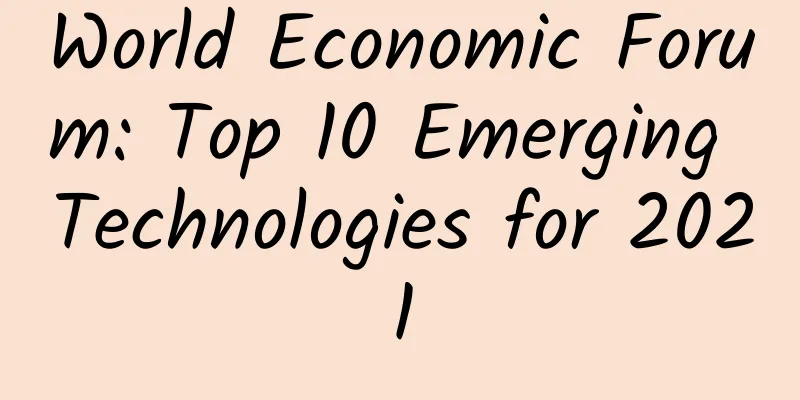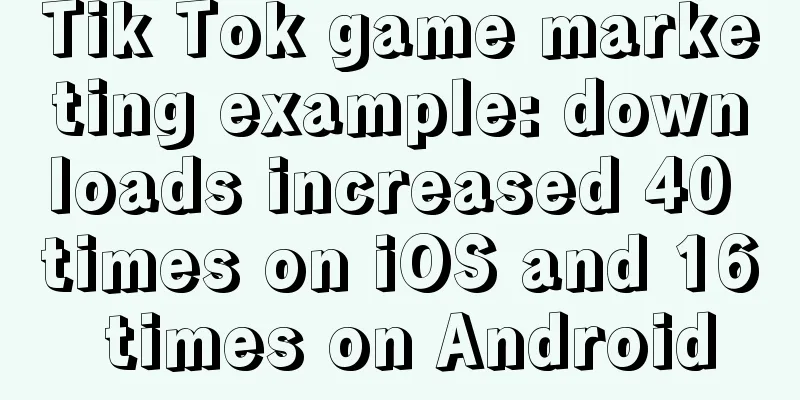World Economic Forum: Top 10 Emerging Technologies for 2021

At the 26th United Nations Climate Change Conference, countries pledged to achieve ambitious new targets for reducing greenhouse gas emissions within this decade. The fulfillment of these commitments will depend on the development of green technologies and the expansion of their application. Two such technologies — the production of “green” ammonia and engineered crops that produce their own fertilizer — both aim to help make agriculture more sustainable and made this year’s emerging technology list. Top 10 Emerging Technologies From breath sensors that can diagnose disease to wireless charging of low-power devices, this year's list of top emerging technologies is filled with exciting developments related to the environment, health, infrastructure and connectivity. Experts sifted through dozens of nominations to identify a group of new technological developments that have the potential to disrupt the status quo and spur real progress. Here are the top 10 emerging technologies for 2021. The rise of decarbonization A century has passed since scientists proposed that excess carbon dioxide in the Earth's atmosphere was trapping heat and causing a warming planet, and in that time the world is working to decarbonize all aspects of daily life. Governments and industries have made groundbreaking commitments to reduce carbon emissions. Over the next three to five years, delivering on these commitments will require unprecedented technological innovation and scaling up to industrial production levels the deployment of emerging technologies such as large-scale energy storage, low/no carbon chemical sources, revitalized rail transport, carbon sequestration, low-carbon agriculture, zero-emission vehicles and power sources, and globally agreed compliance monitoring. Crops that make their own fertilizer Today, the world uses more than 110 million tons of nitrogen fertilizer each year to boost crop yields. What if crops could capture nitrogen themselves, "fixing" it in the form of ammonia, just as legumes such as soybeans and soya beans do? As one of the most important emerging technologies, researchers now aim to make other crops, such as corn and other cereals, self-fertilizing as well. For example, researchers are working to mimic the symbiotic molecular exchanges between legumes and bacteria to create root nodules, natural fertilizer factories for legumes. Another approach is to teach soil bacteria that typically colonize cereal roots (but don’t usually produce nodules) to produce nitrogenase, a key component that converts atmospheric nitrogen into plant-compatible ammonia. Blowing air to diagnose disease Soon, testing for disease may be as simple as exhaling for patients. New breath sensors can diagnose disease by sampling the concentrations of more than 800 compounds contained in human breath. For example, elevated levels of acetone in a person's breath indicate that the patient has diabetes. These sensors sense changes in electrical resistance as breath compounds flow through a metal oxide semiconductor. Algorithms then analyze the sensor's data. While this emerging technology still needs to be refined before it becomes widespread, in a study conducted in Wuhan, China in March 2020, the sensor achieved an astonishing 95% accuracy in detecting the COVID-19 virus and 100% sensitivity in identifying patients. Produce medicines on demand Today's drugs are often produced in large batches, with the entire production process consisting of multiple steps, and different parts of the process are distributed around the world. This process may take several months to complete and involve hundreds of tons of materials, which can bring some challenges to production consistency and reliable supply. Now, advances in microfluidics and on-demand pharmaceuticals have enabled a small number of common drugs to be produced on demand, and this technology will cover more and more drugs. The process, which moves materials through pipes into small reaction chambers, is also known as continuous flow manufacturing. In remote areas or field hospitals, these drugs could be made in portable machines, with doses tailored to each patient. One challenge that needs to be addressed is reducing the high cost of this emerging technology. Power from wireless signals The Internet of Things (IoT) is made up of billions of electronic devices that leverage the connectivity of the Internet for some function. IoT sensors report data that is critical to our daily lives, and they are often very low-power devices, but keeping them charged is difficult because the battery life is limited, and once deployed, they are often difficult to touch. With the advent of 5G, wireless signals with enough power are now available that tiny antennas inside IoT sensors can “harvest” electricity from those signals. Early forms of this emerging technology are already being used in automated “tags” that are powered by radio signals emitted by drivers passing through toll booths. Design to extend the “health span” The World Health Organization predicts that the proportion of the global population aged 60 and over will nearly double from 12% to 22% between 2015 and 2050. Aging is accompanied by acute and chronic diseases such as cancer, type 2 diabetes, dementia and heart disease. Researchers have shown that understanding the molecular mechanisms of aging can help us not only live longer, but also live healthier. Using holographic techniques (for example, it can quantify the activity of all genes or the concentration of all proteins in a cell at the same time) and insights from epigenetics, researchers have been able to identify biomarkers that can strongly predict disease, which provides direction and targets for aggressive treatment. Ammonia Goes Green To meet the world's food needs, crops will often need to be fertilized with ammonia - and lots of it. Synthesizing ammonia for fertilizer involves an energy-intensive method called the Haberbusch process, which requires large supplies of hydrogen. Today, most hydrogen is produced through electrolysis (using electricity to split water molecules) or through the high-temperature cracking of hydrocarbons. The energy required to drive both processes currently results in significant greenhouse gas emissions. With renewable energy now becoming common, a "green" variant of hydrogen is being created that does not release greenhouse gases. In addition to removing excess carbon from the atmosphere, green hydrogen does not use the polluting chemicals that would be incorporated if fossil fuels were used as an energy source, and its purity enables more efficient catalysis to facilitate the production of ammonia. Biomarker devices go wireless No one likes needles. Yet many common acute and chronic conditions require more or less frequent blood draws to monitor biomarkers that are important for tracking the progress of cancer treatment, diabetes, and other diseases. Advances in low-power wireless communications, as well as new chemical sensing technologies using optical and electronic probes, are enabling continuous, noninvasive monitoring of critical medical information. More than 100 companies have deployed or are developing wireless biomarker sensing devices for a variety of scenarios, with a focus on diabetes (given its global prevalence). Wireless connectivity ensures that data is instantly available, allowing remote medical professionals to intervene in real time if needed. Houses printed from local materials Large-scale 3D printing of homes is already being done on a limited scale in the United States and other developed countries. In developing countries, where limited infrastructure makes transporting materials a challenge, recent practices using 3D printers have made leaps and bounds to print buildings out of locally sourced materials, clay, sand, and local fibers—eliminating about 95% of the materials that need to be transported to the building site. This emerging technology could enable the construction of sturdy shelter in remote areas where housing needs are acute and where viable transportation networks are unavailable. The results could be a game-changer for countries that are often left behind. Space connects the world Sensors in the Internet of Things (IoT) can record and report important information about weather, soil conditions, humidity, crop health, social activities, and countless other valuable data sets. Recently, with the advent of countless low-cost microsatellites in low-Earth orbit, which are able to capture this data around the globe and download it to central facilities for processing, the IoT will provide unprecedented visibility into what is happening on a global scale—including in developing regions that were previously inaccessible and without traditional Internet infrastructure. Problems such as the low power of secure data links and the short lifespan of low-Earth orbit satellites remain, but steady progress is expected to allow global implementation within the next three to five years. The PDF version will be shared on 199IT Knowledge Planet, just scan the QR code below! |
Recommend
[Popular Science of Chinese Military Technology] Victory or defeat is decided in silence - how important will electronic confrontation in aerospace be in the future?
With the rapid development of aerospace technolog...
Annual review | 3 key words for brand marketing in 2019
Introduction: Frequent collaborations, frequent h...
How will Youpengpule start its three engines with 2 billion yuan in hand?
In the Internet TV industry, Youpengpule is consi...
"Climbing Mount Tai until you doubt life?" This time there is salvation!
Are your legs still shaking like sieves after cli...
If app stores don’t change, they’ll die.
[[134594]] The wave of mobile Internet entreprene...
2022 Chengdu Tea Tasting Studio Contact Guide
Chengdu Tea Tasting Studio has its own appointmen...
4000-word KOC expert operation strategy
This article wants to talk about KOL/ KOC communi...
TCL Game Console T² Experience: Bringing the Domestic TV Game Console Experience to a New Level
The lifting of the ban on the game console industr...
5 predictions for IoT and mobile app integration
It makes sense to integrate IoT and mobile device...
IBM cognitive white paper: The path to intelligence
When the term artificial intelligence was first c...
Is there formaldehyde in the wall renovation paint in Lanzhou? How long does it take for the formaldehyde in the paint to be released after painting the wall?
There are many materials used for wall renovation...
Convincing "deep fakes" just to make you smile?
Leviathan Press: I personally think Walter Schere...
Boeing's KC-46 is not up to standard, and may be "stolen" by Lockheed Martin, losing the big order of the tanker project
Lockheed Martin has officially launched a bid to ...
A curious question for the Year of the Snake! Will the lively New Year wake up hibernating snakes?
Review expert: Wang Lei, National Park and Nature...









